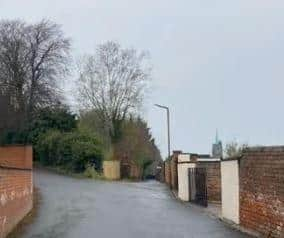Falkirk Council: Permission for Bo'ness house build after ruling it is not on Antonine Wall
and live on Freeview channel 276
Members of Falkirk Council’s planning committee visited the site in Grahamsdyke Lane, Bo’ness, which is now vacant and overgrown but was previously occupied by a 1950s bungalow, known as Romwall.
The proposal for a new four-bedroom house was called in by local councillor David Aitchison, concerned it was “in violation of the Grange Conservation Area management plan, on land of historic significance along the line of the Antonine Wall”.
Advertisement
Hide AdAdvertisement
Hide AdSpeaking on behalf of the applicant, agent Gareth Jones told members that investigations have been done of the site, led by Falkirk Council’s former archaeologist, Geoff Bailey.


The lane is not far from where the Bridgeness Slab – regarded as one of the finest pieces of Roman sculpture in Britain – was discovered, further down the hill.
It had been suspected that the Antonine Wall – which was built in around AD142 – followed the alignment of the lane. However, following investigations, Mr Bailey had concluded that the probably wall did not follow the lane’s alignment, but was probably further to the east.
Mr Jones said: “There was quite a thorough excavation done on the site – there were three trenches dug and there was no evidence of anything of Roman origin.”
Advertisement
Hide AdAdvertisement
Hide AdOverall, there were seven objections to the proposal and two letters of support.
The agent said the design has been changed to reflect concerns of Falkirk Council’s urban design officer.
Mr Jones said they also intend to keep as many trees as possible, while the mature hedging will be kept and restored. One large beech tree, which is not in good condition, will be removed.
There were also concerns about access to the property but councillors were told that there was traffic speeds are low and it is not a busy road. Cutting back vegetation is expected to improve visibility and other safety measures will be looked at.
Councillors were also assured that there would be ongoing monitoring of work, due to the historical nature of the area, and members agreed unanimously to grant planning permission.